7 Pros and Cons of Redmi 12: Is It Worth Buying?
The Redmi 12 made its international debut in June 2023. Positioned as the successor to the Redmi 10 series, the Redmi 12 skips a numerical iteration, aligning its naming convention with the Redmi Note series which had advanced to the Redmi Note 12 in the same year.
Priced around $132, the Redmi 12 offers significant value, especially for those interested in mid-level gaming, thanks to its capable chipset.
Many potential buyers might wonder what a smartphone in this price range can offer. To address this curiosity, our team at Carisinyal has compiled a list of the strengths and weaknesses of the Redmi 12.
Pros of Redmi 12
Xiaomi consistently delivers compelling features and performance, even in its entry-level smartphones like the Redmi 12. This model has significant strengths. Here are a few key advantages:
1. Premium Design and Good Build Quality
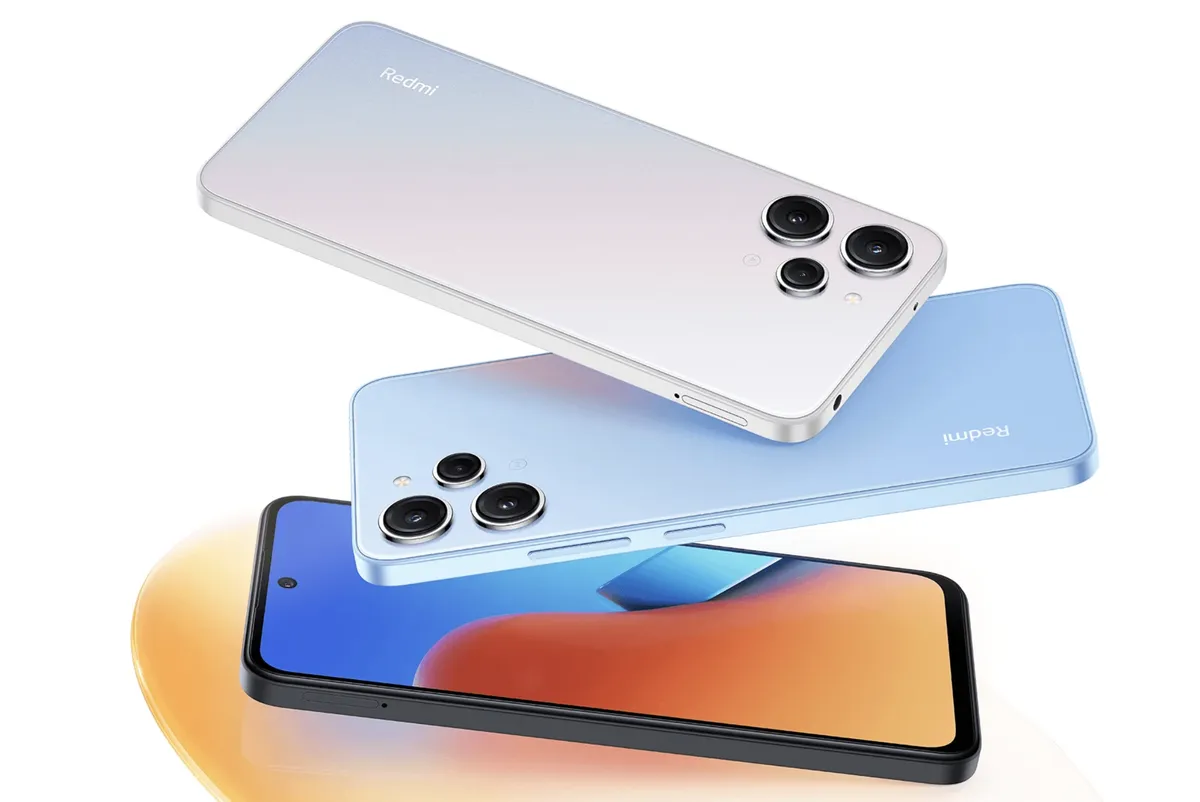
The Redmi 12 stands out with its design, which closely resembles those found in other entry-level models such as the Tecno Spark 10 Series, Infinix Hot 30 Series, and realme C53 NFC.
The round camera setup with a zigzag pattern has become increasingly popular, even among mid-range models like the POCO F5 and the Redmi Note 12 Series. This style was greatly influenced by the iPhone Pro Series, which played a pivotal role in popularizing this design trend.
Switching focus back to the Redmi 12, the phone sports a minimalist and sleek appearance. The exterior, free from a protruding camera module, integrates the triple camera system directly onto the upper back of the chassis. Additionally, instead of plastic, the rear is crafted from glass to enhance its glossy finish and smooth feel.
The phone's design includes flat sides and a back to ensure that it is comfortable to hold. Despite its premium look, the Redmi 12 remains lightweight and compact, measuring just 168.6 x 76.28 x 8.17 mm and weighing under 200 grams at 198.5 grams.
Available in three appealing colors, the Redmi 12 features a unique Polar Silver that shows a stunning color gradient in sunlight, alongside other options like Sky Blue and Midnight Black.
Beyond its aesthetic appeal, the Redmi 12 is built to last. The glass-backed and plastic-framed body is robust, and the inclusion of IP53 certification means it can resist dust and splashes from all angles. Whether you're caught in a light rain or sweating during a workout, this device can handle it.
This addition of IP certification marks a significant improvement over its predecessor, the Redmi 10, which didn't provide such protection.
2. Sharp Screen with Adaptive Refresh Rate
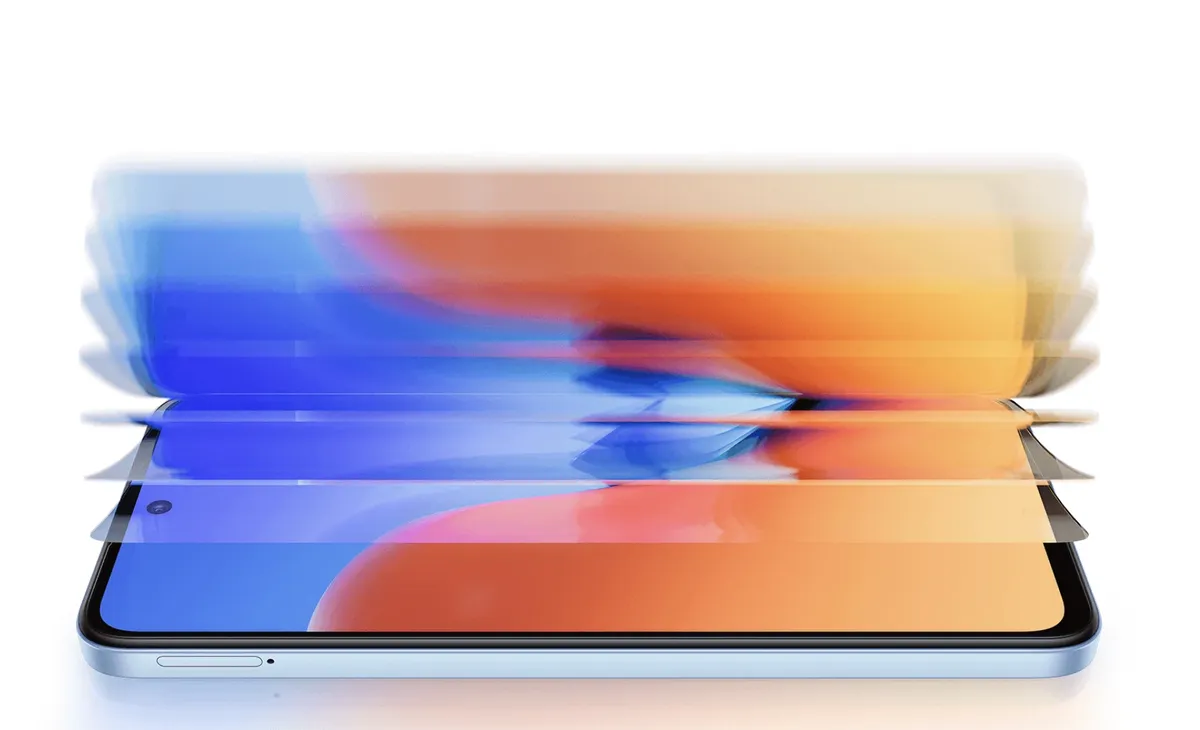
The Redmi 12, one of Xiaomi's budget-friendly offerings, comes with a commendably high-quality screen. It boasts a large 6.779-inch IPS LCD panel, ideal for multimedia tasks like watching videos or gaming.
The design features a punch-hole camera and thin bezels, which contribute to a more expansive display. With a 20:9 aspect ratio, this smartphone achieves an impressive screen-to-body ratio of 85.1 percent.
While it lacks an AMOLED panel, the IPS LCD display still performs admirably within its category. It offers excellent clarity with a Full HD+ resolution of 1080 x 2460 pixels, and a pixel density of 396 ppi ensures sharp images.
A remarkable aspect of the Redmi 12's display is its 90 Hz refresh rate, which significantly enhances the smoothness of motion, making everything from scrolling through web pages to playing games feel more fluid.
Furthermore, the screen features AdaptiveSync technology, which dynamically adjusts the refresh rate based on the content being viewed. This smart adjustment not only optimizes performance but also helps in conserving battery life.
For those who spend long hours on their phones, the Redmi 12’s screen comes with the SGS Low Blue Light certification, reducing eye strain. Additionally, the Reading Mode 3.0 is available to enhance visual comfort during prolonged reading sessions.
However, the Redmi 12 does have its limitations. It achieves a peak brightness of only 550 nits, which can be insufficient for clear visibility under bright sunlight.
Also, the absence of a proximity sensor is a drawback. Typically, this sensor helps turn off the display during phone calls when the device is held close to the ear to prevent unintended inputs. Without this sensor, the screen remains active, which can lead to accidental touches.
3. Powerful Chipset Performance in its Class

Despite its affordable entry-level pricing, the Redmi 12 does not compromise on performance. It is recognized as one of Xiaomi’s entry-level smartphones that stands out for its excellent performance within its category.
For the price of 132$, the Redmi 12 is powered by the MediaTek Helio G88 chipset. This component, built using a 12 nm process, ranks highly in terms of performance among its peers. This part is made with a 12 nm process, making it one of the better-performing chipsets in its class.
It features an octa-core processor similar to the Helio G85, which includes two Cortex A75 cores at 2 GHz for strong performance and six Cortex A55 cores at 1.8 GHz to save energy. It also has a Mali G52 MC2 GPU running at 1000 MHz for good graphics performance.
How does it fare in performance tests? According to data from Nanoreview, the Helio G88 achieved a score of 248,443 on the AnTuTu v9 benchmark. On GeekBench 5, it scored 367 in single-core and 1,270 in multi-core tests.
Further testing by GSM Arena with the Helio G88 installed in the Redmi 12 yielded an AnTuTu v9 score of 258,006. This result positions it slightly above the realme C55, also equipped with a Helio G88, yet below the Samsung Galaxy A14 5G with its Dimensity 700 chipset.
In GeekBench 5 tests, the Redmi 12 scored 361 for single-core and 1,303 for multi-core, trailing slightly behind the realme C55 and considerably below the Samsung Galaxy A14 5G.
The Helio G88 chipset makes the Redmi 12 a solid choice for gaming. Users can enjoy smooth gameplay in titles such as Mobile Legends, NBA Live Mobile Basketball, and FIFA Soccer.
However, for those who might consider increasing their budget slightly, options like the Dimensity 700 or Snapdragon 685 offer even more power without significantly impacting battery life, ensuring endurance and performance.
4. Large Memory Capacity
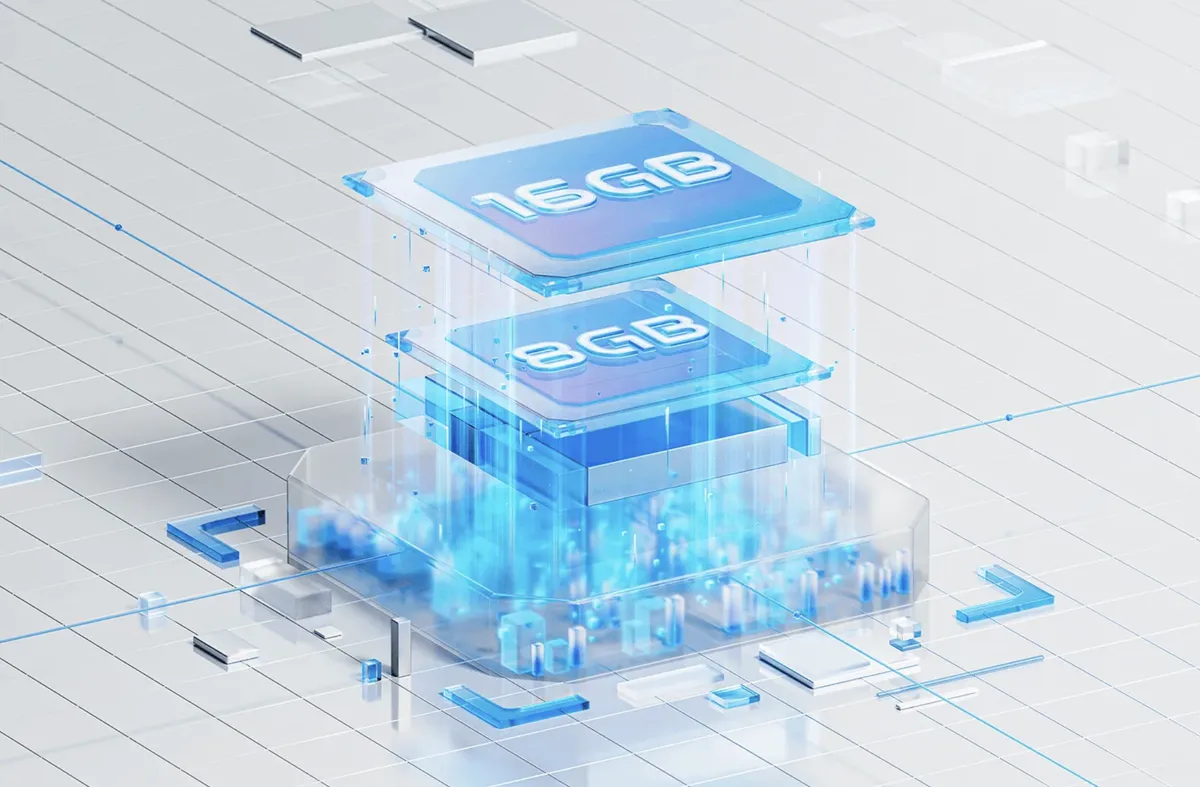
One key advantage of the Redmi 12 is its large memory capacity, which is an upgrade from its predecessor, the Redmi 10. This increase in memory helps the Helio G88 chipset deliver better performance than the one in Redmi 10.
It's important to note that a smartphone's performance isn’t solely dependent on its chipset; having more memory also plays a crucial role. More memory allows the phone to handle more tasks simultaneously without slowing down.
The Redmi 12 comes in two RAM options: 4 GB and 8 GB. Additionally, it features a Memory Extension option that can boost the RAM capacity up to an impressive 16 GB, enhancing the chipset's efficiency significantly.
Furthermore, Redmi 12 is available in two storage options: 128 GB and 256 GB. It also supports microSD cards up to 1 TB for even more storage. However, it lacks a dedicated microSD slot, meaning you must choose between dual SIM functionality without a microSD card or a single SIM with a microSD card.
One downside is the type of internal storage used, which is still eMMC 5.1. Although sufficient, it’s slower compared to the UFS storage found in some other models in the same price range.
5. Reliable Camera during the Day

The Redmi 12's camera setup is similar to its predecessor, the Redmi 10, except that the Redmi 12 omits the 2 MP depth camera. However, this isn't a significant loss as the depth sensor contributes little to overall performance.
The main camera of the Redmi 12 is a 50 MP unit with an f/1.8 aperture and PDAF autofocus, utilizing pixel-binning technology to enhance light capture and detail by merging adjacent pixels into one large pixel.
Besides this, there's an 8 MP ultrawide camera with a 120-degree field of view and an f/2.2 aperture, along with a 2 MP macro camera for detailed close-ups.
The front houses an 8 MP selfie camera, just like the Redmi 10, equipped with an f/2.1 aperture and a 1/4.0-inch sensor size.
Despite similar specifications, the Redmi 12 offers improved daytime photography to optimize various aspects to enhance performance.
 Source: GSM Arena
Source: GSM Arena Source: GSM Arena
Source: GSM Arena Source: GSM Arena
Source: GSM Arena Source: GSM Arena
Source: GSM ArenaAccording to GSM Arena, the images from the Redmi 12 display sharp details and vivid colors with solid contrast, particularly outdoors. Indoor photos may show some noise but maintain consistent quality.
Interestingly, the ultrawide camera often shows better color contrast than the main camera, particularly in how it renders the blue of the sky. However, at 5x zoom, images appear noisy and lack detail, and the macro camera struggles with contrast and detail.
Using the macro camera effectively requires careful attention to lighting, as it significantly impacts the clarity of the images.
 Source: GSM Arena
Source: GSM ArenaNight photography, however, remains a weak point for the Redmi 12, with results not showing any notable improvement over the Redmi 10.
 Source: GSM Arena
Source: GSM Arena Source: GSM Arena
Source: GSM ArenaThe Redmi 12 also features a portrait mode with a bokeh effect, producing compelling photos with neat background separation and preserved details.
The selfie camera surprisingly performs well for its price range, producing sharp images with balanced color and contrast. It still performs adequately indoors, though a steady hand is needed to prevent blurring.
Overall, the Redmi 12 stands out among Xiaomi's entry-level offerings with its dependable camera capabilities, particularly in daylight. The image quality is quite impressive for its price. However, the device falls short in video recording, limited to 1080p at 30 fps for both front and rear cameras.
6. 5000 mAh Battery Lasts All Day

A key feature of many budget-friendly smartphones is battery life, and the Redmi 12 excels in this area.
The Redmi 12 comes with a robust 5000 mAh battery that performs well in daily use. Its longevity is enhanced by the Helio G88 chipset and an adaptive refresh rate screen that conserves power.
Xiaomi claims that the Redmi 12 can last up to 23 days on standby. Additionally, it can handle up to 37 hours of calls, 26 hours of reading, and 16 hours of video playback. It also includes an 18 W fast charging feature to speed up recharge times.
To verify these claims, GSM Arena tested the battery life of the Redmi 12. The phone achieved an endurance rating of 117 hours, breaking down to 38 hours and 41 minutes for calls, nearly 14 hours for web browsing, and over 17 hours for video playback.
These test results confirm that the Redmi 12 has impressive battery life, occasionally surpassing the manufacturer's claims. However, its endurance score is still slightly lower than that of the Redmi 10, which scored 127 hours, the Samsung Galaxy A14 5G at 130 hours, and the realme C55 at 123 hours.
GSM Arena also evaluated the charging speed of the Redmi 12. The phone reaches about 29% charge in 30 minutes and takes just over two hours to fully charge from 0%.
7. Using Android 13 and MIUI 14
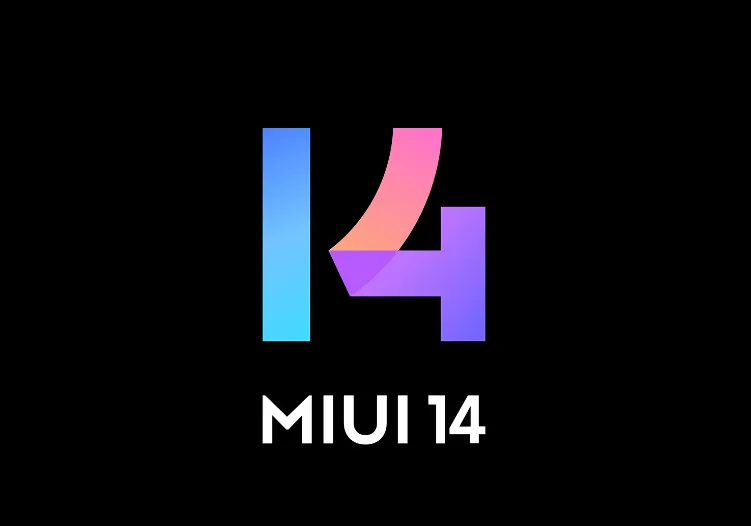
At its release, the Redmi 12 was equipped with the Android 13 operating system alongside MIUI 14, marking a significant upgrade from its predecessor. The Redmi 10 only operated on Android 11 with MIUI 12.5.
This upgrade enables the Redmi 12 to perform more efficiently. While some advanced features remain inaccessible, users can benefit from features like floating windows, which are ideal for multitasking across several apps simultaneously.
Additionally, the Redmi 12 is promised two future Android updates. This means it will support up to Android 15, ensuring longevity. Xiaomi also commits to providing security updates regularly until June 2027.
Disadvantages of Redmi 12
Despite its strengths, the Redmi 12 is still an entry-level smartphone with a modest price tag, which means it has some limitations. Here are a few points to consider:
1. Without Stereo Speaker

A notable drawback of the Redmi 12 is its single, mono speaker, unlike its predecessor, the Redmi 10, which featured stereo speakers at a lower price.
This reduction in speaker quality likely allowed Xiaomi to allocate resources to enhance other aspects of the phone. This kind of trade-off is common among phone manufacturers, especially in budget models.
Though the Redmi 12 has only one speaker, it still delivers adequately loud and clear sound. However, the audio experience can be significantly diminished if the speaker is covered, as the sound only emits from one source.
Redmi 12 provides alternatives for better sound through the inclusion of a 3.5 mm audio jack, allowing for the use of earphones or a headset. Additionally, it supports wireless connectivity options like TWS or Bluetooth 5.3 earbuds.
2. Internal Storage Still eMMC
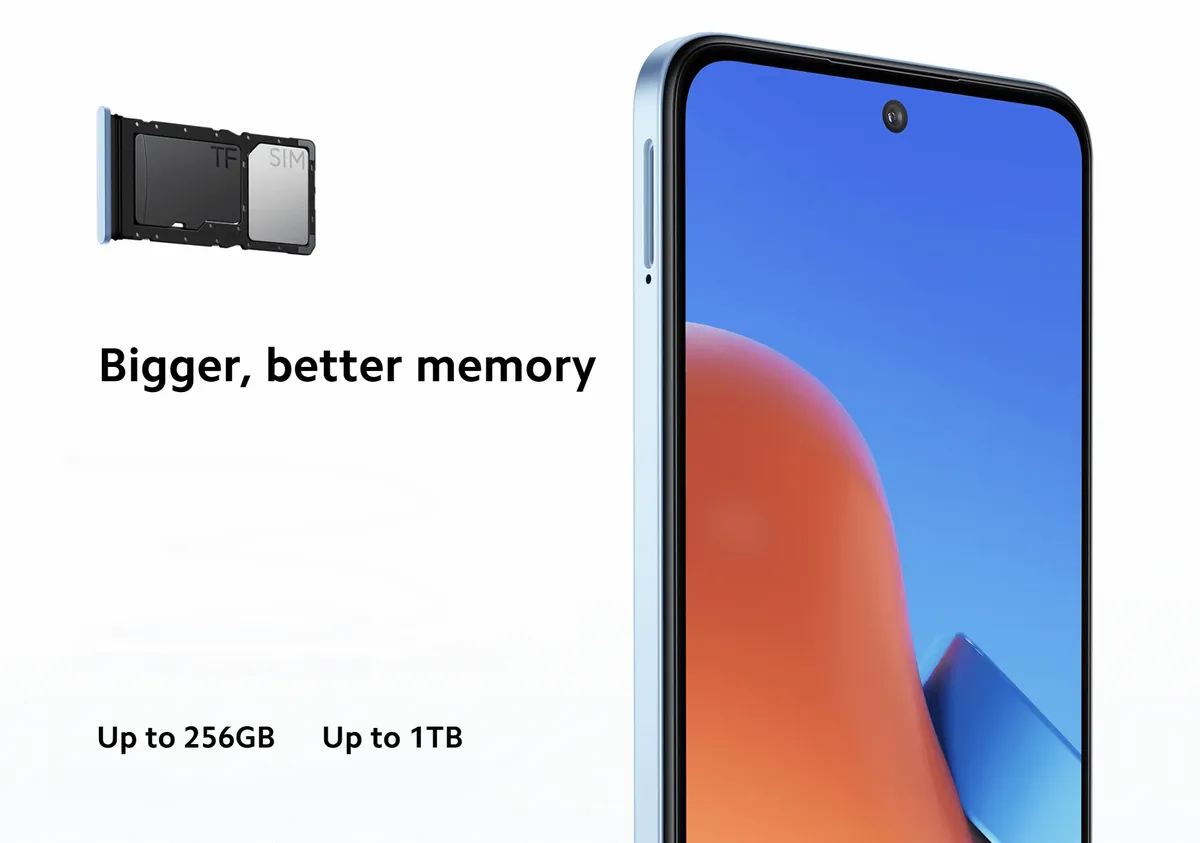
The Redmi 12 offers more internal storage than the Redmi 10, with options for 128 GB and 256 GB. However, it still uses eMMC 5.1 memory, which is slower compared to the UFS type memory used in similar models like the Redmi 12C and Redmi 10C.
To explain, eMMC memory has slower data transfer speeds, meaning it takes longer to move or copy files from one folder to another.
In contrast, UFS memory supports a feature called command queue (CQ), which helps manage several tasks at once more efficiently. UFS also has a full-duplex interface, allowing it to read and write data simultaneously, which speeds up processing times significantly compared to eMMC.
3. No Gorilla Glass

For an entry-level smartphone used daily, it's essential to have good durability, from battery life to physical robustness, especially for the screen, which is prone to damage like scratches and cracks.
A common type of protective glass used in smartphones is Corning's Gorilla Glass, which comes in several types, including Gorilla Glass 3, 5, 6, and Victus. These are designed to protect screens from breaking due to falls or impacts.
Unfortunately, the Redmi 12 does not feature any Gorilla Glass protection, unlike its predecessor, the Redmi 10, which had Gorilla Glass 3. This omission makes the Redmi 12's screen more susceptible to damage.
Since the Redmi 12 lacks built-in screen protection, it is highly advisable to use a tempered glass screen protector to safeguard the display.
Conclusion
The Redmi 12 from Xiaomi is an intriguing entry-level phone. It's not only great for everyday tasks, but you can also enjoy smooth gaming thanks to its Helio G88 chipset, which supports ample RAM and storage. Additionally, it features a 5000 mAh battery that can last throughout the day.
For daily activities, the Redmi 12 boasts a Full HD+ display with a 90 Hz adaptive refresh rate, ideal for vibrant and fluid visuals. The camera system is also quite capable, allowing you to capture beautiful moments every day.
Starting at 132$, the Redmi 12 does have some drawbacks. These include a reduction from stereo to mono speakers, the continued use of slower eMMC internal storage, and a lack of any protective glass on the screen.
Overall, the Redmi 12 is quite appealing with its various features and capabilities. However, there are other smartphones in the same price range that might serve as better alternatives. These include the Samsung Galaxy A14 5G with its Dimensity 700 processor and 5G capability, the Realme C55 which boasts a superior camera and fast charging, and the Redmi Note 12 4G which offers a 120 Hz AMOLED display and a Snapdragon 680 processor.
So, after reviewing the pros and cons, are you still interested in getting the Redmi 12, or are you leaning towards another model? Please share your thoughts and reasons in the comments section.
